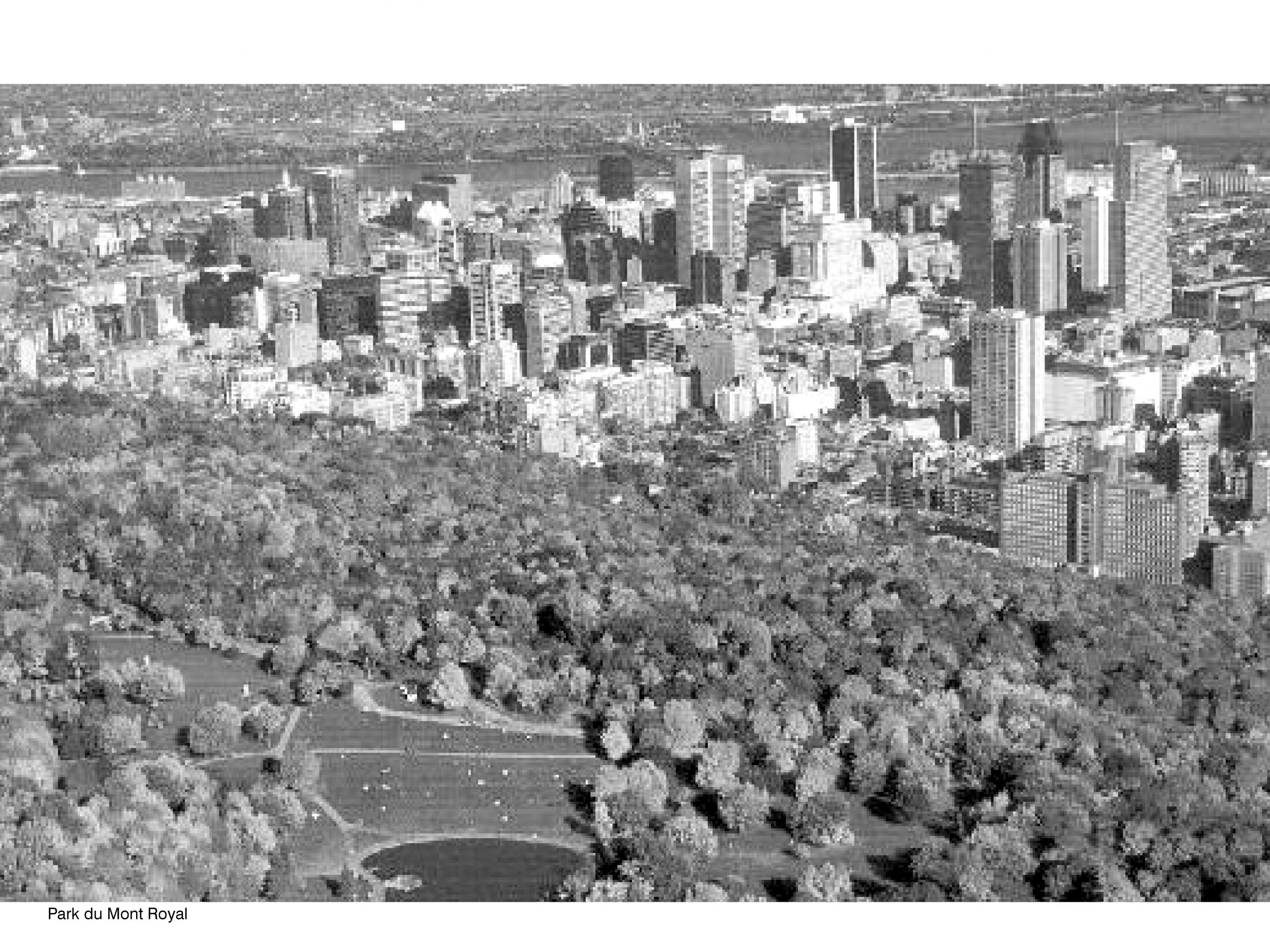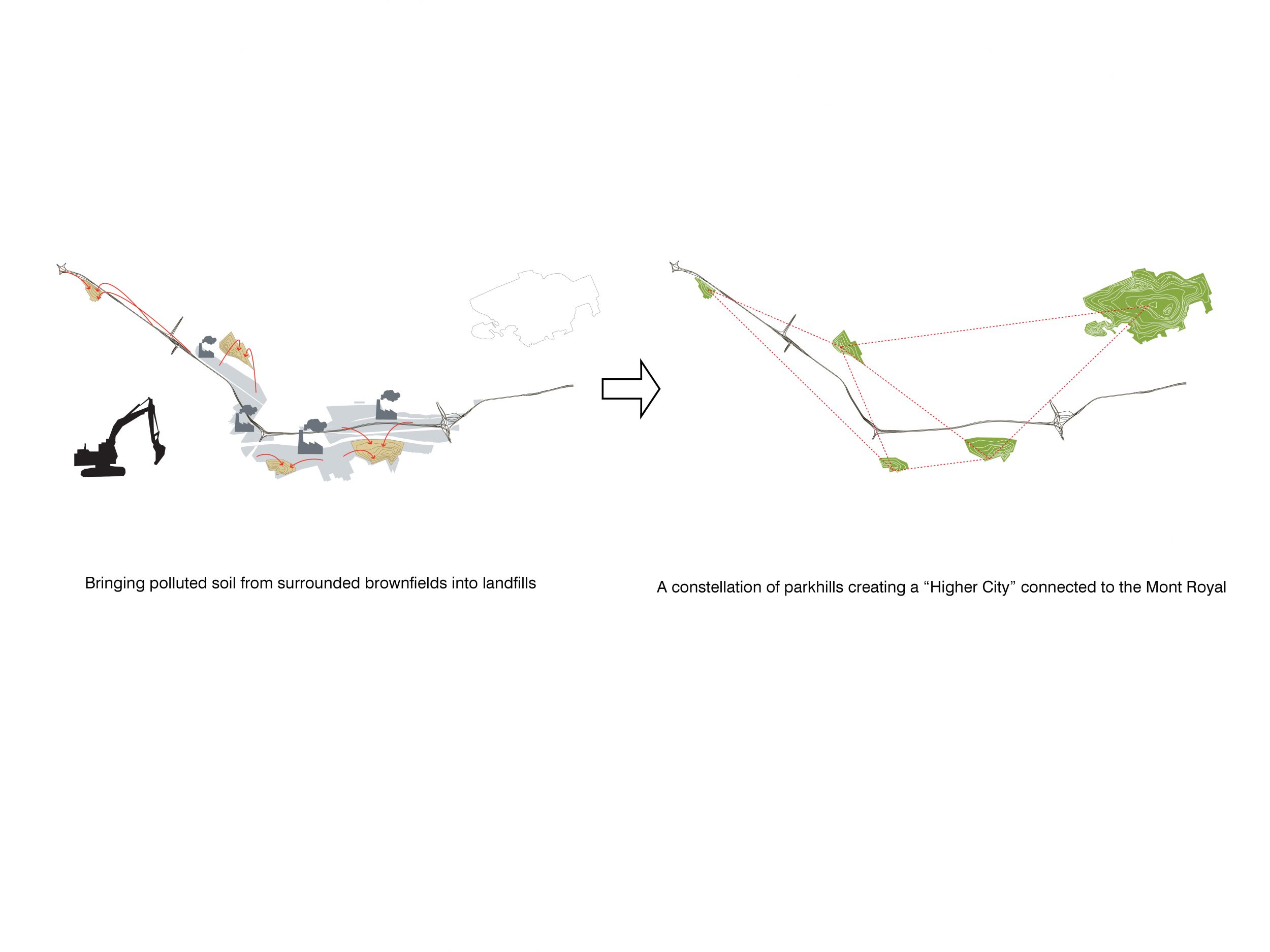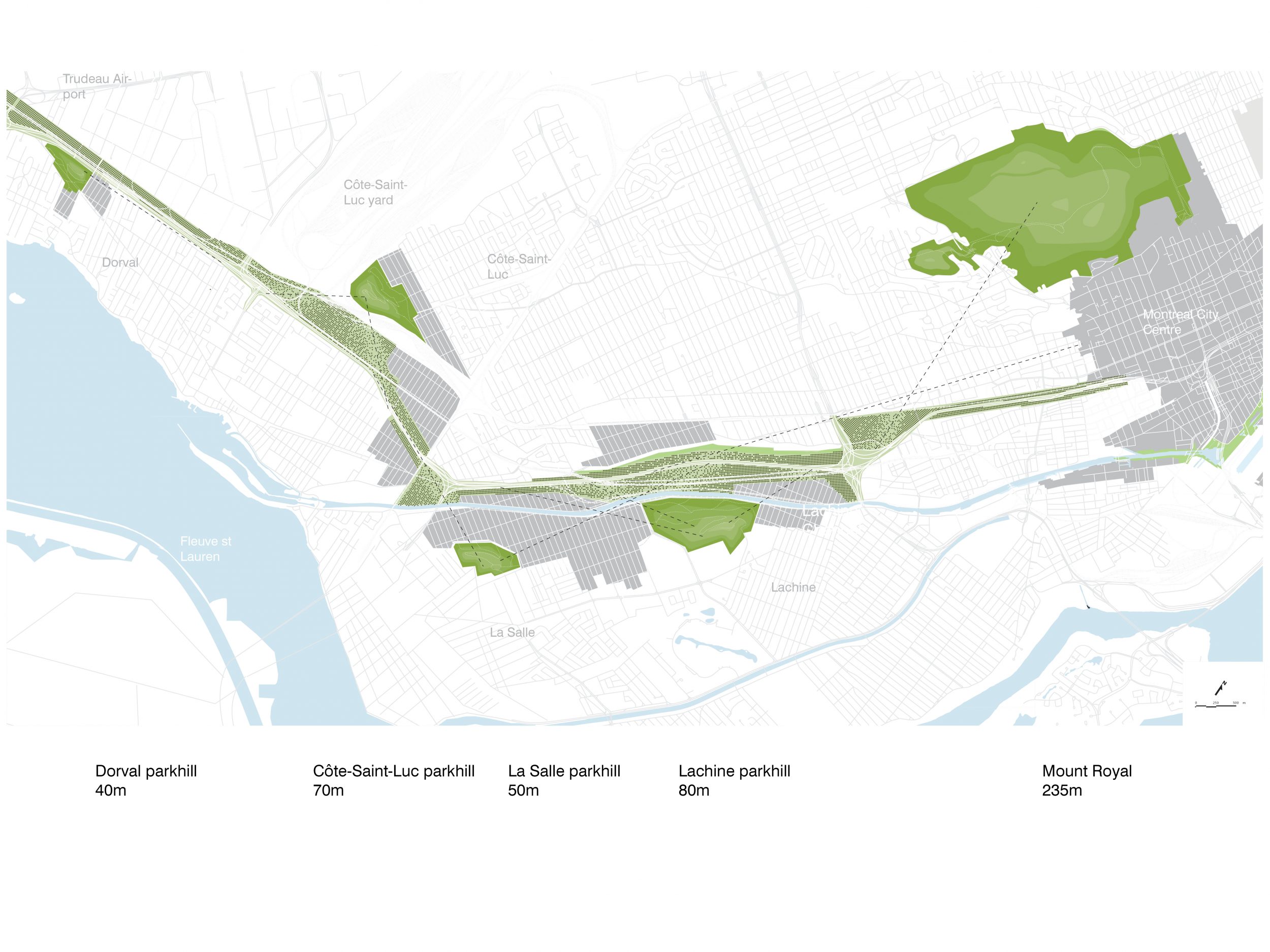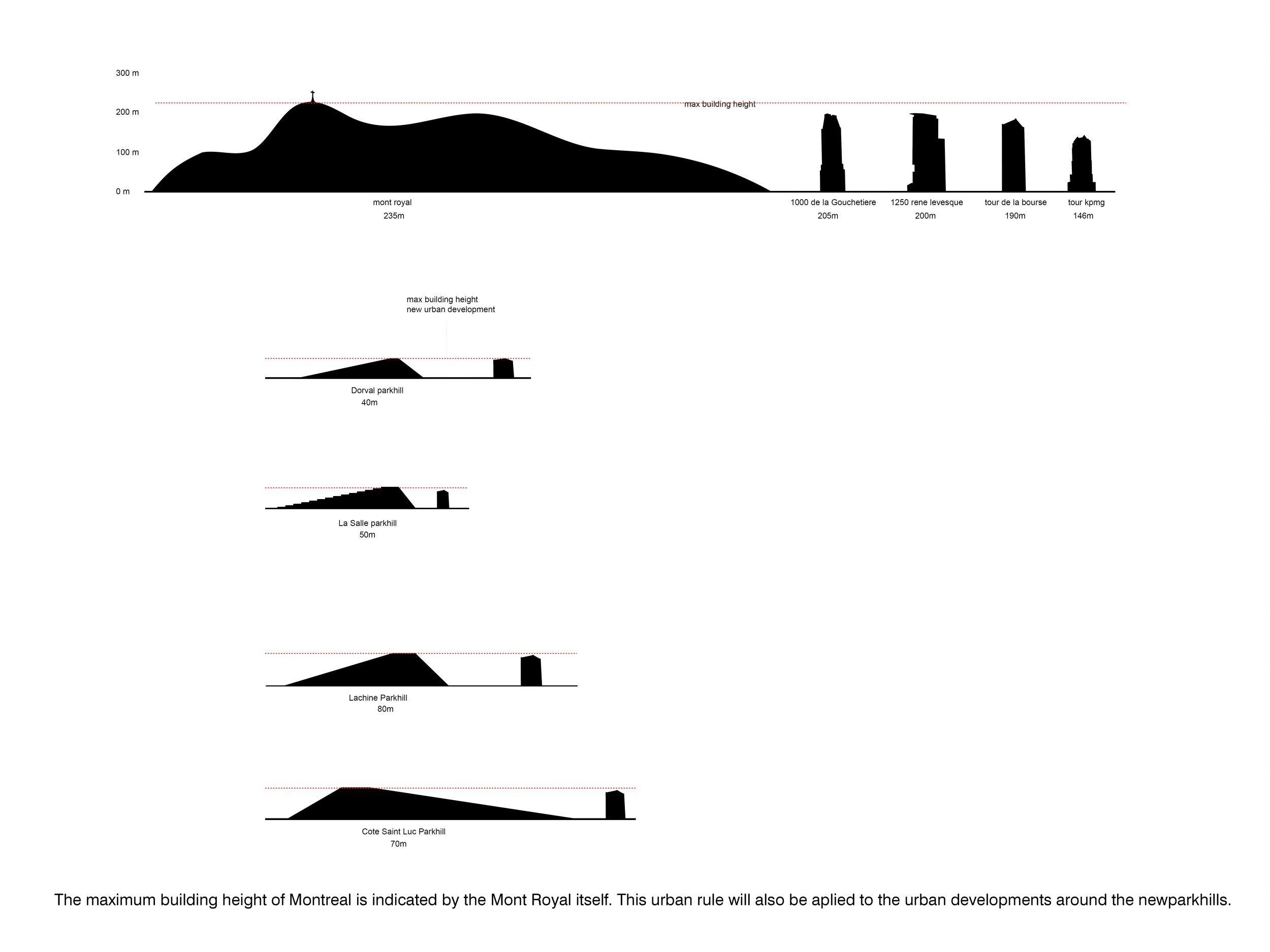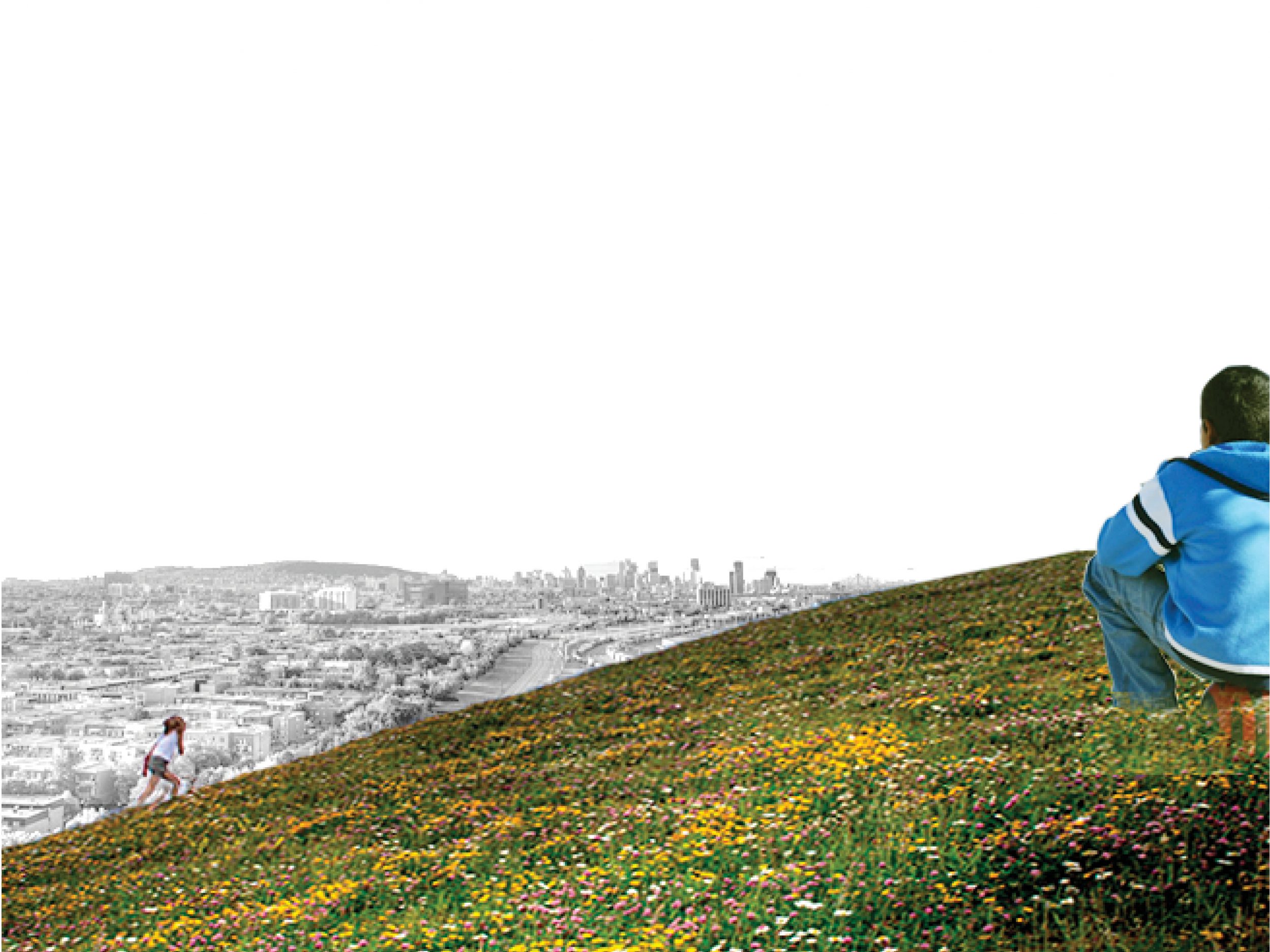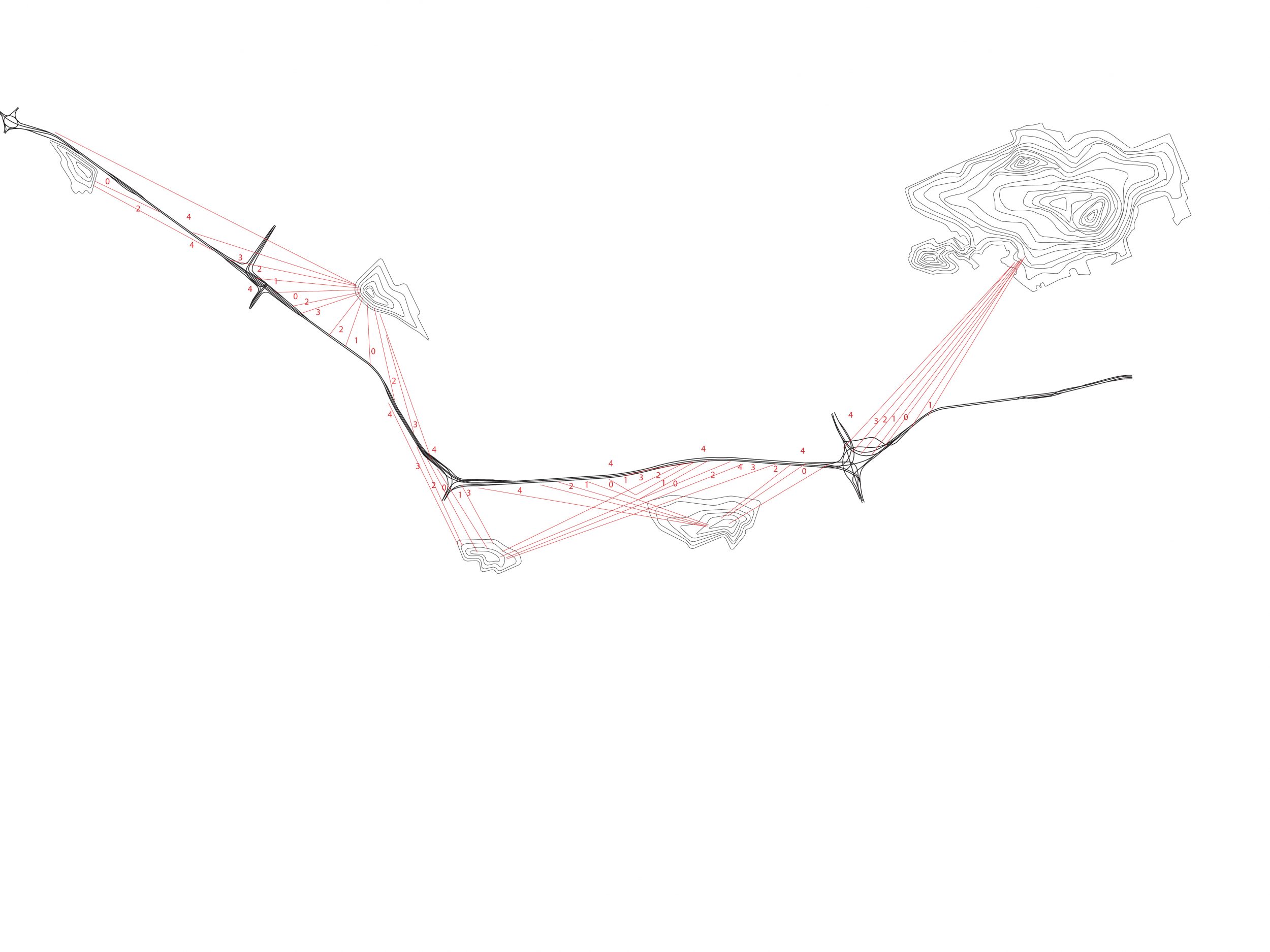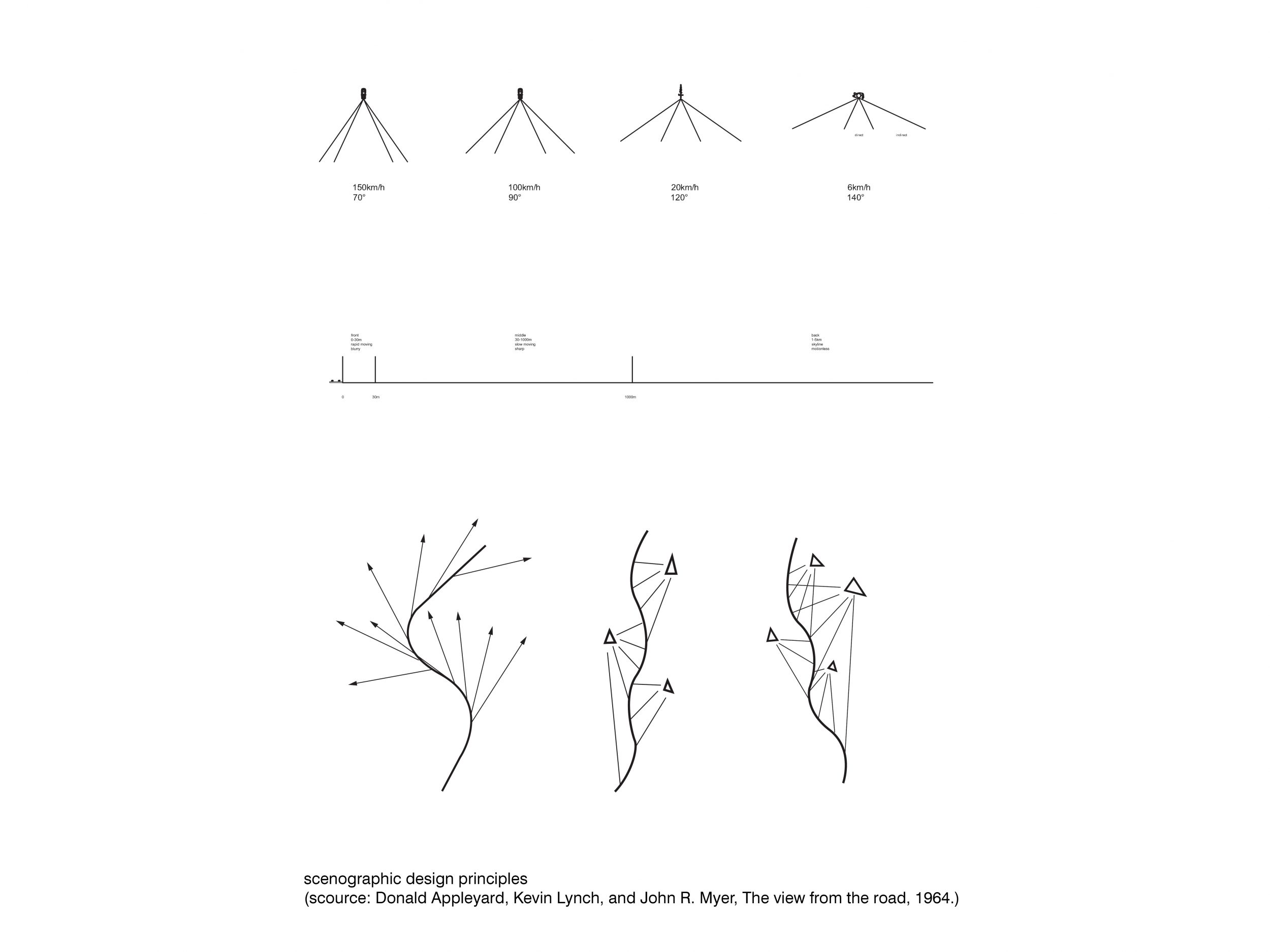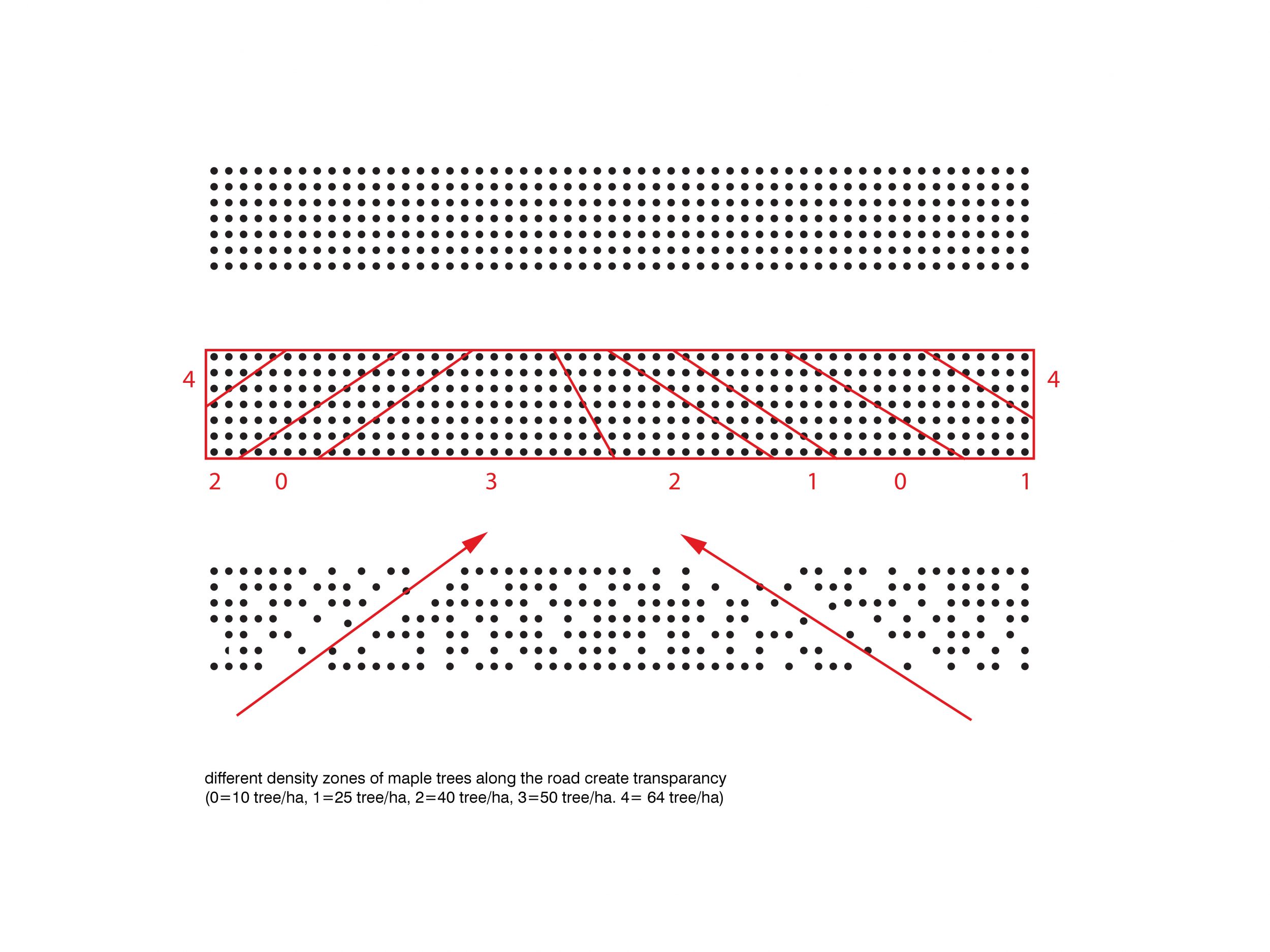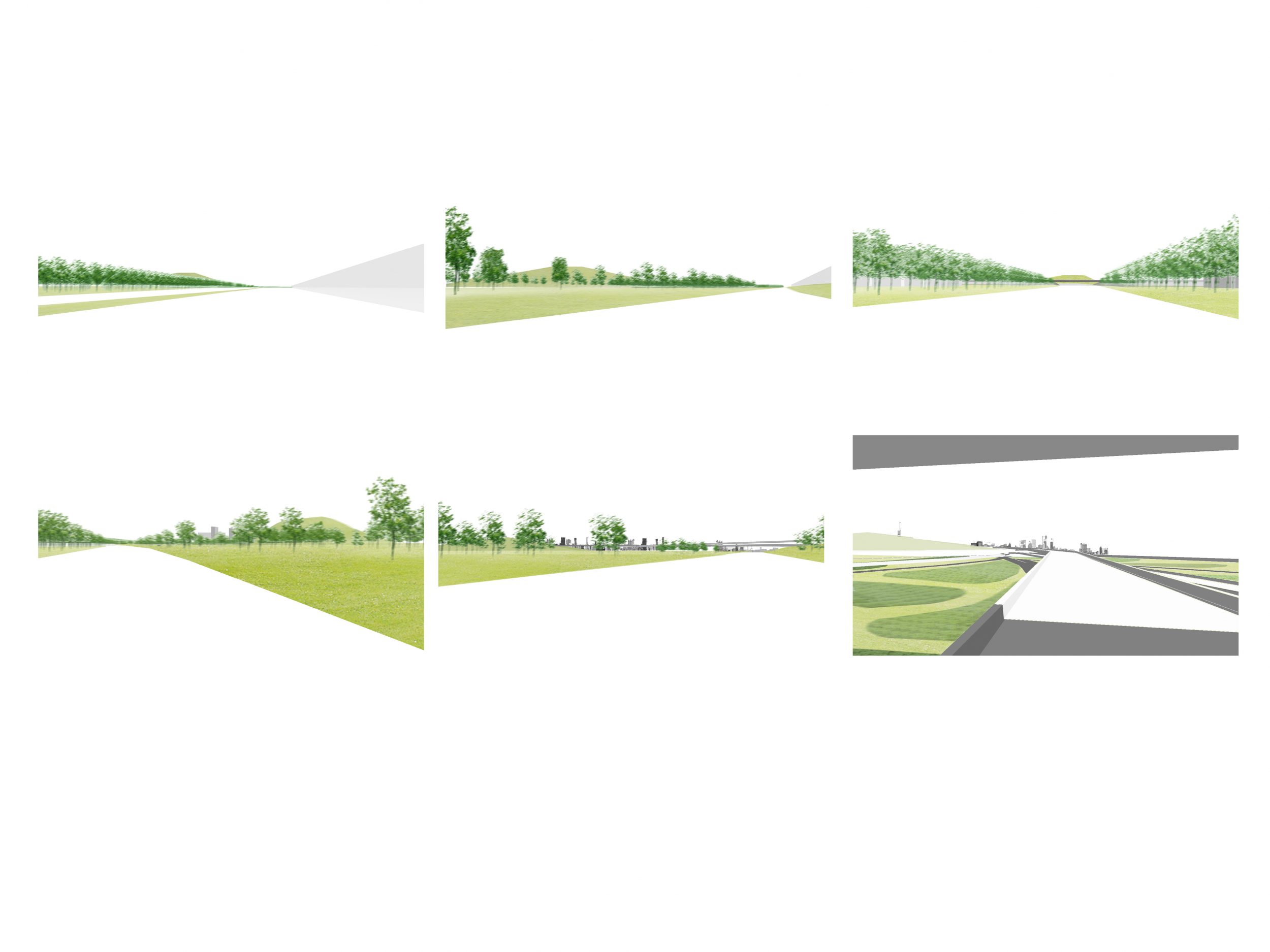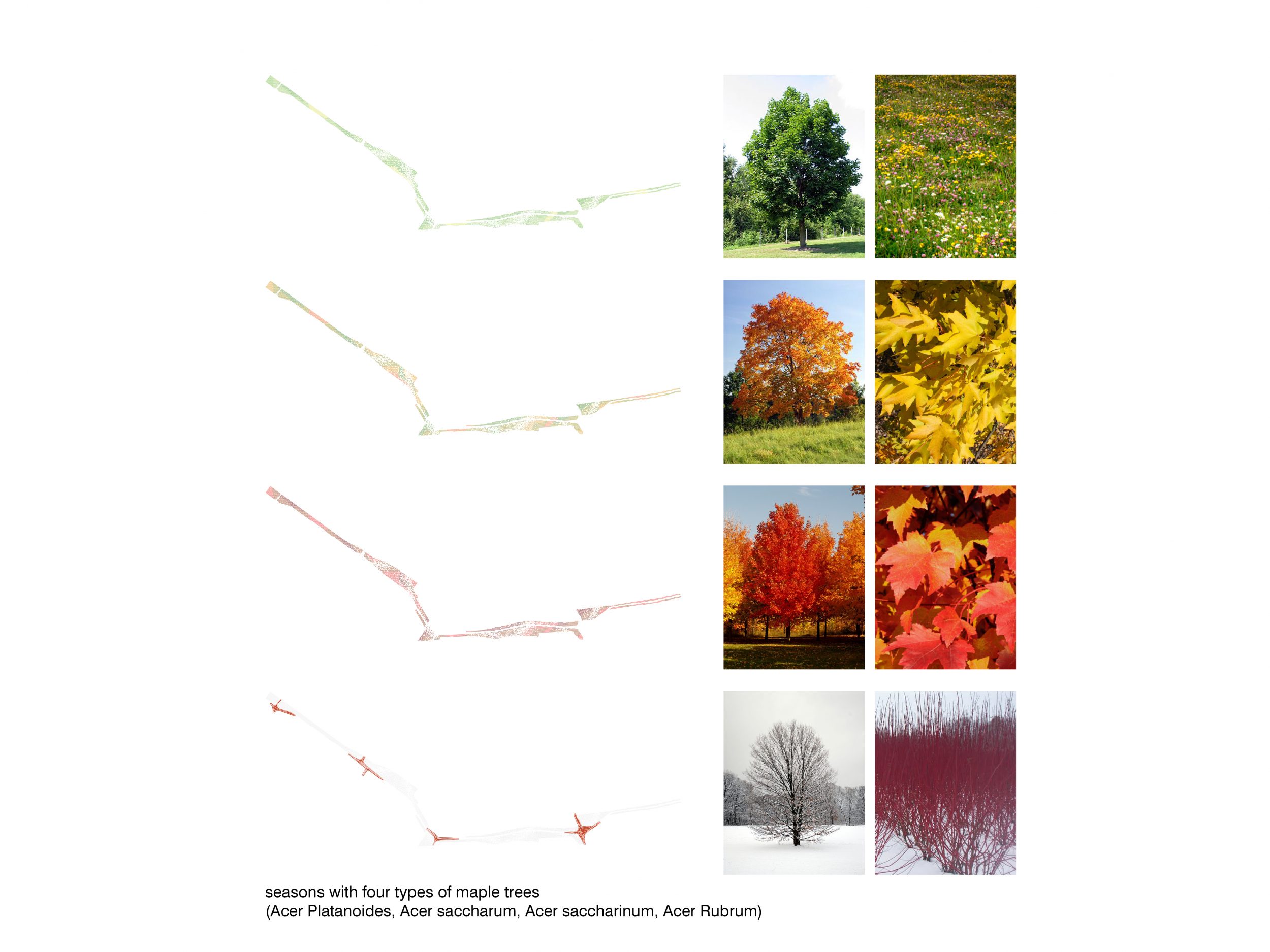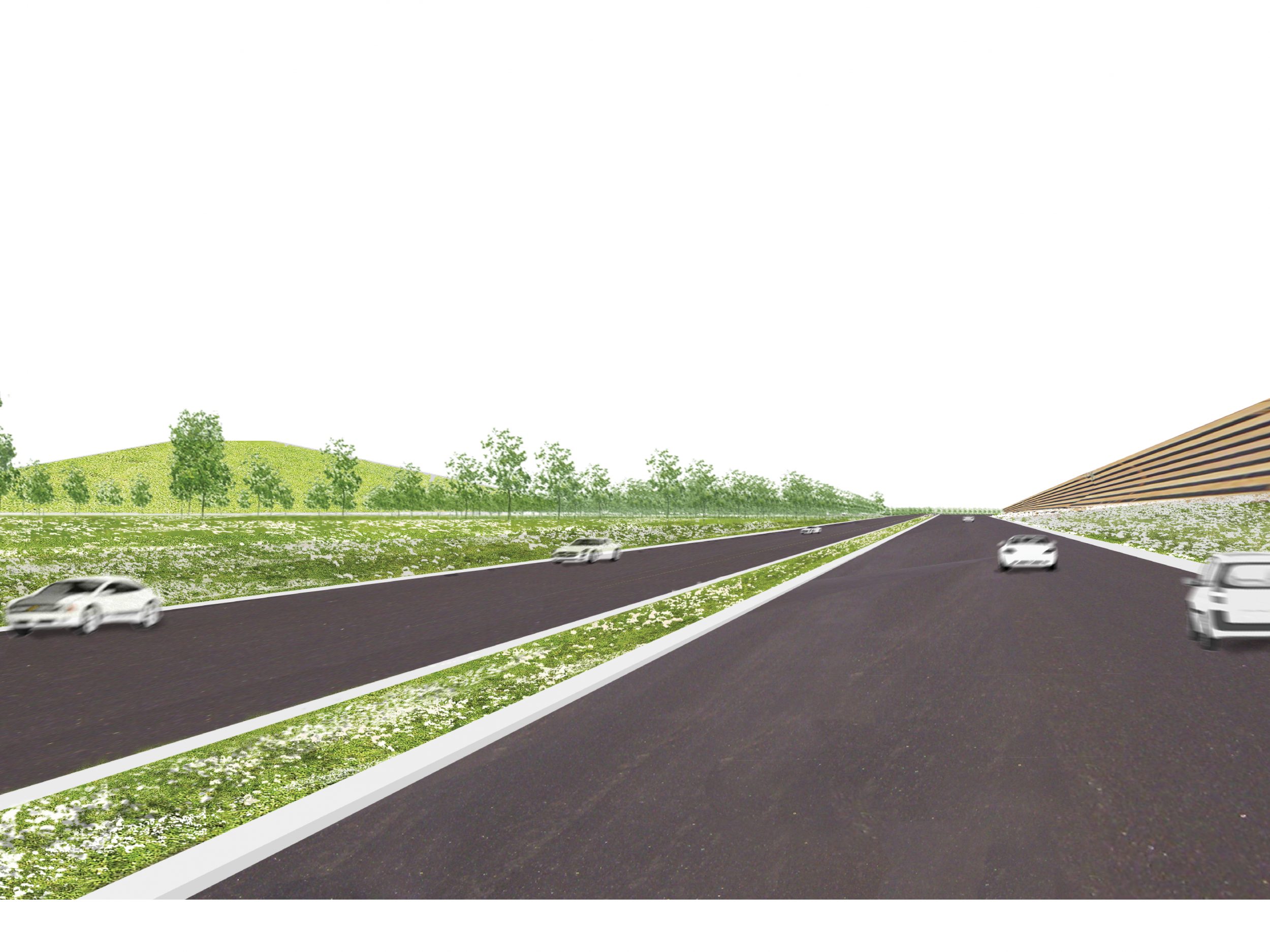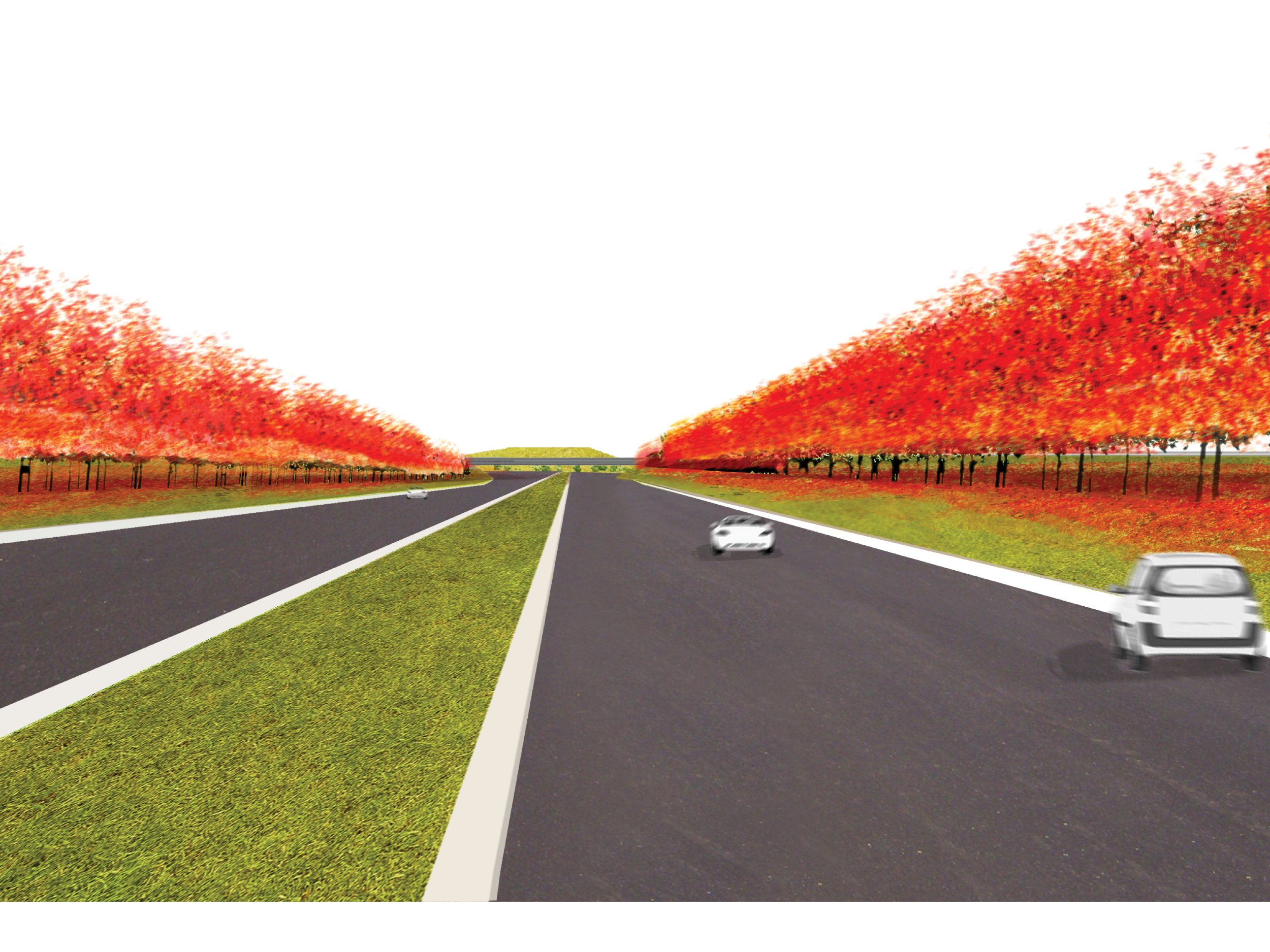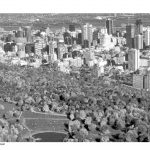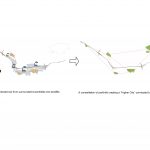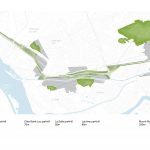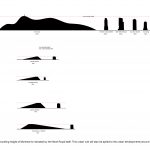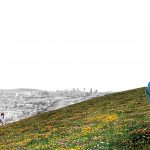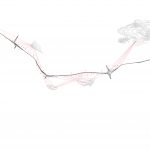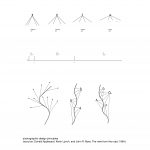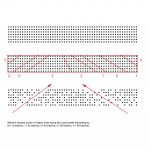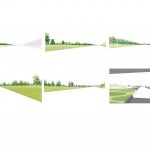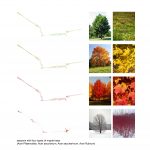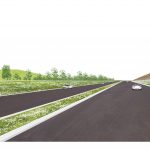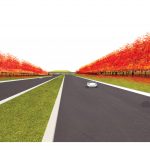Montreals International Gateway Corridor (MIGC) will be transformed within the next 20 years. Old industrial areas surrounding the gateway will transform into new urban areas. OTO proposes to use this opportunity to design a new city entrance and scenographic experience: the Gateway as a sequence of scenes which reveals the story and identity of Montreal.
The park hill Parc du Mont Royal, designed by Frederic Olmsted, provides beautiful views and offers visitors stunning vistas on the city. We propose a contemporary version: polluted soil coming from the vast area of brownfields, estimated around 1 million m3 meters, will be stored in landfills and finally develop into new parkhills along the gateway. Strategically located on the main existing and new north south axis, the parks will be anchored in the city fabric.
By planting 4 species of maple trees a coherent visual net forms a frame for the Metropolis to distinguish itself. An iconic sea of maple trees will change during the season from yellow to red. Gradually changing densities result into different views from permeable and transparent (10 trees/ha) showing characteristic buildings and cityparts, creating a moiré effect (40 trees/ha) into dense and closed (64 trees/ha). The new park hills will be the landscape features in the background moving slow and sometimes motionless.

